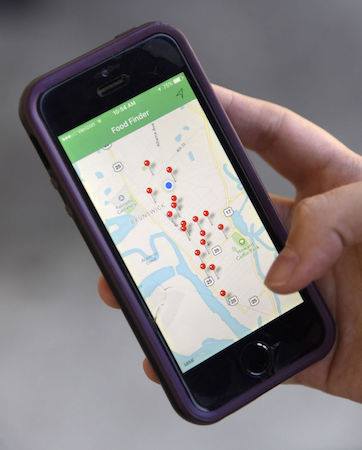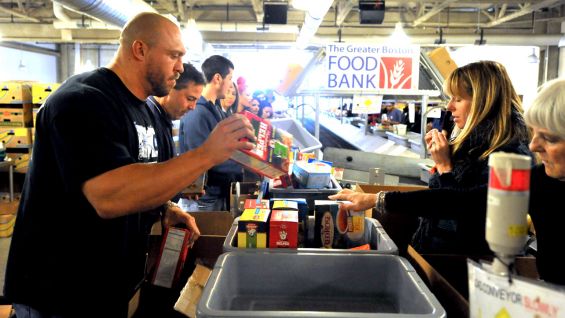Food banks tend to distribute 2-3 times as much food per day over the Christmas holidays. They have to cover the equivalent of 320 million extra meals in the span of ten days. Luckily, the path to find these banks is shown by a heartwarming application.
The holidays are almost here, ushering in a palpable feeling of excitement and celebration. At least, for most people. For others, the holiday season is also a time of stress and hunger.
According to the United States Department of Agriculture (USDA), 41.2 million people in 2016 lived in food-insecure households. During holidays, their daily struggle intensifies, as the
21 million children who normally get free or reduced lunches every day at their schools, need to be fed by their family. The increased strain is causing many families to look for alternative sources of income.
PawnGuru, a marketplace to pawn, purchase and sell items, noticed a considerable rise in people pawning stuff during the end of the year months due to the temporary increase of food costs per household.
The USDA pointed out that most common families-at-risk are those headed by late 20s-mid 30s adults with children. Especially single adults with kids: 31.6% of such households headed by single women, and 21.7% of those headed by single men were food insecure.
Most of them choose to reduce their quality or quantity of food in order to provide for their children.
 Four years ago, Jack Griffin, a Georgia high school student by then, felt overwhelmed by a news story in which 2 fellow American underprivileged children were portrayed. They didn’t always have food and had to get ready for school in public bathrooms. It shocked him. Jack decided to do something about it.
Four years ago, Jack Griffin, a Georgia high school student by then, felt overwhelmed by a news story in which 2 fellow American underprivileged children were portrayed. They didn’t always have food and had to get ready for school in public bathrooms. It shocked him. Jack decided to do something about it.
At the same time, it became clear that rather than a luxury item, for tens of millions, internet-enabled smartphones are a lifeline. Low- income Americans rely heavily on them for critical everyday necessities like navigating public transit, finding employment, or connecting with daycare services.
With this information in the back of his mind and after a deceptive quest for meaningful volunteer work, Jack decided that food-insecurity could best be beaten if people could find their way more easily to food pantries, kitchens and shelters. And that’s how FoodFinder was born.
 FoodFinder is now registered as a not-for-profit. Its award-winning app allows food insecure people and people in need to find free food assistance programs quickly. The resources are online available and smartphone-accessible. As nobody is forced to publicly ask where a food bank is located, it reduces the stigma.
FoodFinder is now registered as a not-for-profit. Its award-winning app allows food insecure people and people in need to find free food assistance programs quickly. The resources are online available and smartphone-accessible. As nobody is forced to publicly ask where a food bank is located, it reduces the stigma.
The app is free and users don’t have to give any details to get access to the information. With the FoodFinder app, in times of need, a meal is just a few taps away.
This year FoodFinder is teaming up with PawnGuru to help people in need find a nearby food pantry, rather than having to do a lot of pawning.
“We wish we lived in a world where people didn’t have financial emergencies. But in the meanwhile, FoodFinder gives them more dignity and support through the process than anyone else,” says PawnGuru’s CEO, Jon Polter.
Jack Griffin’s noble initiative got widely acclaimed. Currently, he is studying Business and Social Change. To this day, he remains remarkably thankful to have the opportunity to serve the tens of millions of Americans who are food insecure.












